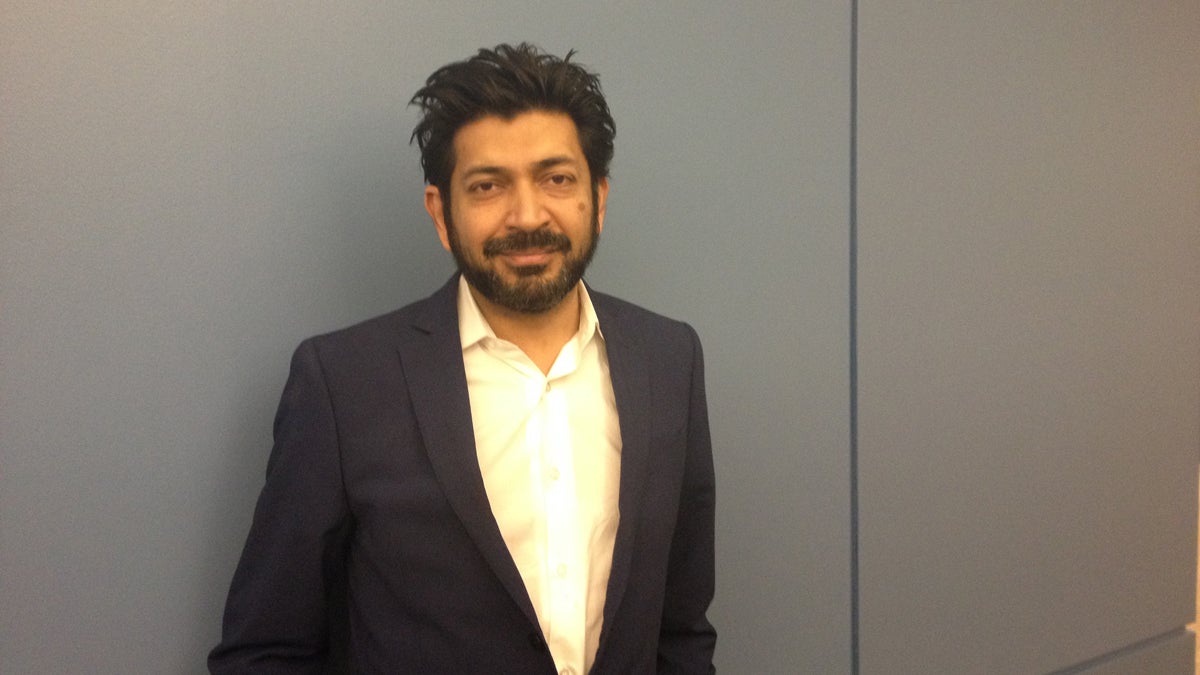A look at one of the ‘oldest diseases we know’ with author and doctor Siddhartha Mukherjee
Listen
Siddhartha Mukherjee is the author of the 2010 Pulitzer Prize-winning book that served as the inspiration for the PBS documentary. (Megan Pinto/for WHYY)
The Pulse has been doing a series of stories on the issue of cancer this month, leading up the release of the new Ken Burns documentary, Cancer: The Emperor of All Maladies, which airs in just three days. For our final installment, we spoke to the author of the 2010 Pulitzer Prize-winning book that served as the inspiration for the documentary.
Siddhartha Mukherjee’s book, The Emperor of All Maladies: A Biography of Cancer, takes a look at the history of cancer, interwoven with personal stories. His book starts with a story about one of his oncology patients – a young mom with acute leukemia.
“I was instantly transfixed by her story,” Mukherjee said. “Her treatment was extremely intensive, as is the case with many patients with leukemia, acute leukemia in particular.”
Fortunately, the young woman went into remission after treatment. Her remission continues today.
“In the end, it was a hopeful story,” Mukherjee said.
Cancer is not a modern disease. Mukherjee says it’s actually one of the oldest diseases we know.
“The very first medical documents that we have, crumbling papyrus from 2500 B.C., contains a reference to a case which almost sounds like a modern description of breast cancer,” he said.
For a long time, an excess of black bile in the body was believed to be the cause of cancer. Doctors would try to bleed or purge the body of it. It wasn’t until the advent of surgery that doctors started cutting cancer out of patients. Early operations, however, weren’t like they are today.
“There was very little anesthesia or antisepsis, so the operation was unbelievably painful and often not sterile,” Mukherjee said. “The patients would die of infections post surgery.”
Once doctors were able to operate in a sterile environment, surgery became more radical. Doctors would cut out the cancer and the tissue surrounding it. More and more tissue was targeted and doctors were going in deeper and deeper.
“Really it was kind of an excavation of the human body to try to get the cancer cells out,” Mukherjee said.
In the 1970s, scientists started looking at the genetics of cancer cells.
“[They] figured out that there are genes inside cells that control normal growth,” Mukherjee said. “If you snap these genes off in their function, if you either mutate them using external carcinogens or they could be randomly mutated by chance occurrences, you essentially unleash cancers.”
Today, we know that there are many kinds of cancers with different genetic footprints.
“If you compare breast cancer with brain cancer with lung cancer, you don’t find the same genes involved in each of them. Each one of them has a unique genetic footprint,” Mukherjee said.
This genetic difference also happens within the same specimen of cancer.
“One woman’s breast cancer might have a different genetic footprint than another woman’s breast cancer,” he said.
So what comes next? Mukherjee says researchers are trying to coordinate all of the resources they have thus far to get more answers.
“We’re trying to coordinate surgery and radiation, but most importantly new kinds of medical therapies to direct them to the treatment and prevention of cancers,” he said.
Part one of Cancer: The Emperor of All Maladies airs Monday, March 30, at 9 p.m. ET on PBS stations.
WHYY is your source for fact-based, in-depth journalism and information. As a nonprofit organization, we rely on financial support from readers like you. Please give today.



